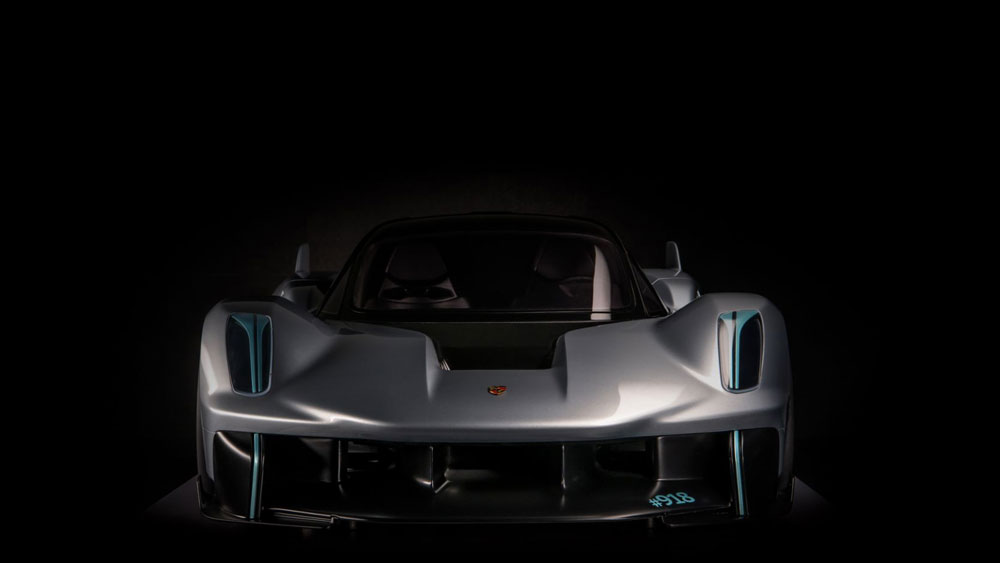Porsche 906 – A Motorsport Icon Born from Porsche’s Racing Innovations

Designed under Ferdinand Piëch’s leadership, the 906 or Carrera 6 is the successor to the Porsche 904 that boasts a tubular space frame and unstressed fiberglass body—replacing the 904’s boxed steel structure. Hand-laid fiberglass ensured uniformity, differing from the 904’s uneven spraying method. Weighing around 1,300 lbs, it was 250 lbs lighter than its predecessor.
Sporting a 220 hp 6-cylinder engine, this street-legal racing car occasionally featured an 8-cylinder for hillclimbing against Ferrari Dinos. The wind tunnel-tested 906 achieved a speedy 170 mph at Le Mans, flaunting gull-wing doors reminiscent of the Mercedes-Benz 300SL and a Plexiglas-covered rear engine—a precursor to future Porsche racing cars.
In this post, we will dig deep into the origin and motorsport triumphs of the famous 906.
Porsche 906 – Design, History, and Motorsport Triumphs
History
The Porsche 901 faced a renaming hiccup, becoming the iconic 911, unlike its peers with zero in the middle. The Carrera GTS tag adorned the 904 coupé, while the 906, conceptualized by Erwin Komenda, had the Carrera 6 title from the start.
Differing from the 904, the 906 sported side fuel tanks, enhancing handling. Ingeniously, some frame tubes doubled as oil channels, lightening the load. The 906 Ollon-Villars borrowed Lotus F1 suspension, while the homologation model embraced 904 components and 5-bolt Porsche wheels.
The 901/20 engine in the 904/6 and 906/6 shed a remarkable 54 kg/119 lb, thanks to the use of magnesium and titanium materials. Meanwhile, FIA regulations evolved and reduced the production requirement to 50 cars for the sports car class.
The 906’s legacy began with prototype chassis 906-016 and 906-017, paving the way for the groundbreaking 906-101.
Motorsport Success:
The inaugural race for the 906 coupé took place at the Daytona 24 Hours in February 1966, marking the speedway’s first 24-hour event in Daytona Beach, Florida. Despite being in the 2-liter prototype class due to incomplete homologation for the FIA sports car class, the 906 secured a class win with drivers Hans Herrmann and Herbert Linge, finishing sixth overall behind a 7-liter Ford GT40s and a 4.4-liter Ferrari.
Moving to the Sebring 12-hour race on March 26, 1966, the factory team’s 906 K Coupe clinched the 2-litre prototype class win and achieved a commendable 4th overall. However, the race was marred by tragedy when a gearbox failure in Mario Andretti’s Ferrari caused a fatal crash, claiming four lives. Bob McLean’s earlier self-inflicted death and this incident nearly ended Sebring’s 1966 race.
The 906’s triumph continued at the Monza 1000 km race on April 25, 1966. Driven by Gerhard Mitter/Hans Herrmann, clinched the 2-litre prototype class victory and secured 4th place overall. By April’s end, Porsche had produced 50 cars, homologating the 906 in Group 4 GT from May 1966. Although officially 50 were made, more 906 models, including sixty 906 K (short tail) Coupés, were produced. Notably, the 906 E, featuring a fuel-injected engine, emerged during testing with the prototype chassis 906-017 and made its debut at Targa Florio.
Porsche’s racing triumphs under Ferdinand Piëch began in 1966 with the Targa Florio victory by Herbert Müller/Willy Mairesse in the 906. Despite a setback in the race due to an accident, the 2.2-liter 8-cylinder 906 (chassis 906-142) showcased potential.
At the 1966 Le Mans 24h, long-tail LH versions were introduced, renaming standard 906s as 906 K. The podium featured 7-litre GT40s, succeeded by three 906 LHs, and the 7th spot was claimed by a 906 K (906-143, #58).
At the Zeltweg 500 km race on Sep 11, 1966, the podium was dominated by three Porsche 906s: 1st Mitter/Herrmann (#14), 2nd Siffert (906-137, #12), and 3rd Schütz/Linge (906-124, #15).
The triumphs of the Porsche 906/Carrera Six extended beyond 1966, stretching into 1967 and 1968. Porsche driver Peter Gregg added to the legacy with wins at Bahama Speed Weeks.
Furthermore, Chassis No. 906-120, part of a limited production run, excelled in endurance competitions. Initially driven by Shintaro Taki in Japan, it conquered major races, including the Suzuka Clubman round and the All-Japan race at Mt. Fuji. Despite its smaller size, the 906 faced formidable opponents like Ford. Taki continued the success in 1967, winning five out of eight races, including the crucial 1,000-kilometer race at Suzuka. Further victories in 1968 and 1969 solidified its remarkable track record. This particular 906 was recently sold for US$2,040,000 at Bonhams auction. It is unconditionally one of the most raced, and most victorious, of all remaining 906s. It can easily be one of the rarest cars in the world.
The 906 Carrera 6 faced racing challenges with its 15″ wheels. Porsche engineers adapted 13″ central nut Formula 1 wheels and special tires, giving birth to the Porsche 910.
Porsche 906 Carrera 6 Specifications:
| Specifications | Homologation Model | Standard Model |
| Engine: | 6-cylinder boxer (1991 cc) | 6-cylinder boxer (1991 cc) |
| Performance: | 155 kW (210 PS) at 8000 rpm | 162 kW (220 PS) at 8000 rpm |
| Torque: | 196 Nm at 6000 rpm | 206 Nm at 6400 rpm |
| Compression: | 10.3:1 | – |
| Valve Control: | Overhead camshaft, chain control | – |
| Cooling: | Air cooling (fan) | Air cooling (fan) |
| Transmission: | 5-speed gearbox, LSD, RWD | 5-speed gearbox, LSD, RWD |
| Brakes: | Dual circuit disc brakes | Dual circuit disc brakes |
| Suspension: | Double wishbones, coil springs, telescopic shock absorbers | Inclined wishbones, coil springs, telescopic shock absorbers |
| Body: | Plastic with tubular space frame | Plastic with tubular space frame |
| Dimensions: | 4113 × 1680 × 980 mm | 4113 × 1680 × 980 mm |
| Weight: | 675 kg (1485 lbs) | 675 kg (1485 lbs) |
| Top Speed: | 162 mph (260 km/h) | 162 mph (260 km/h) |

news via inbox
Sign up and never miss out on the latest news and updates at HighStuff




